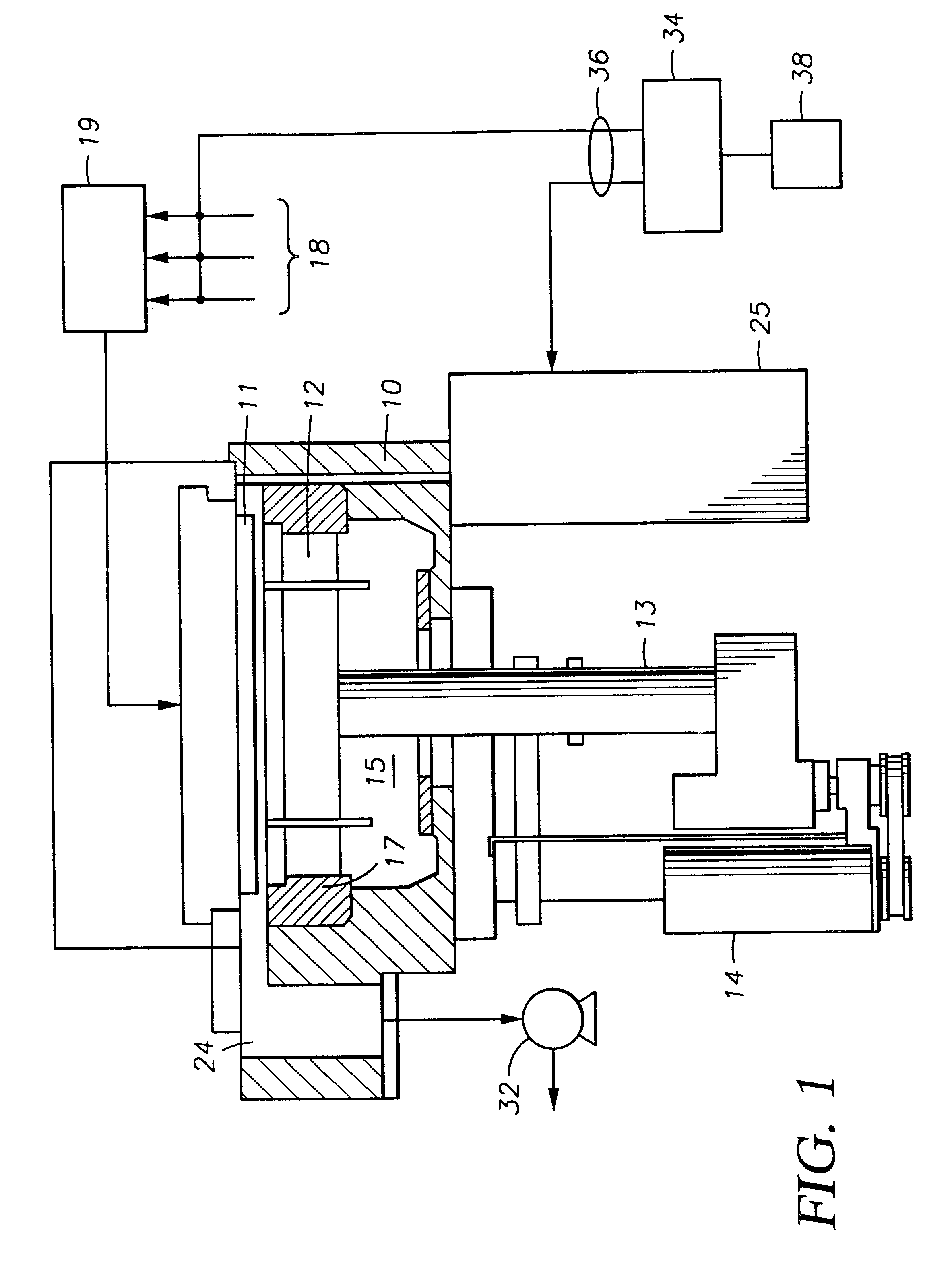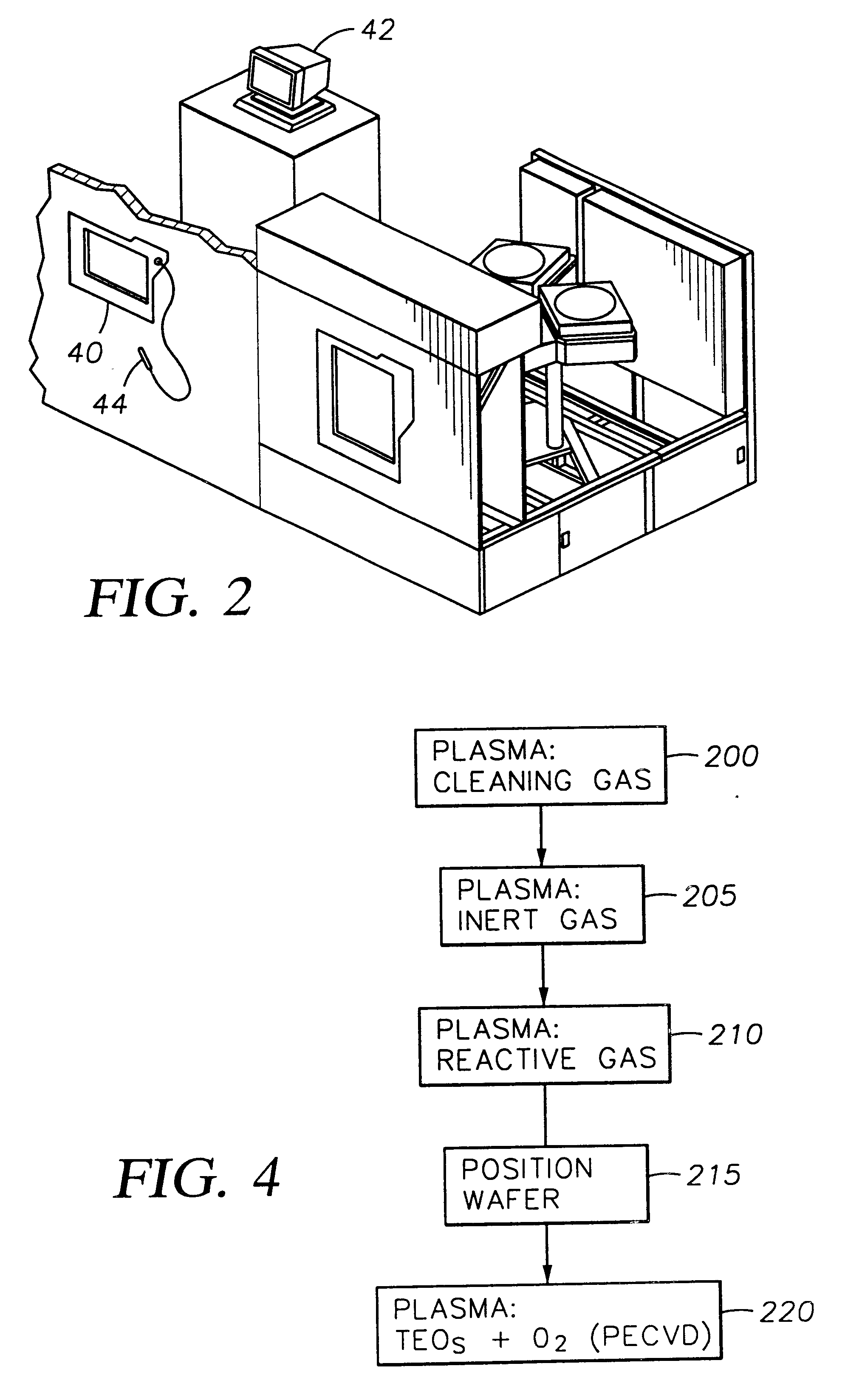Decontamination of a plasma reactor using a plasma after a chamber clean
a plasma reactor and plasma technology, applied in the direction of solid-state diffusion coating, mechanical control devices, process and machine control, etc., can solve the problems of cvd layer deposition rate, metal layer damage, precursor absorption,
- Summary
- Abstract
- Description
- Claims
- Application Information
AI Technical Summary
Problems solved by technology
Method used
Image
Examples
Embodiment Construction
The following example demonstrates the present invention by describing a successful pretreatment of a CVD plasma reactor. This example was undertaken using a chemical vapor deposition chamber, and in particular, a "CENTURA DxZ" plasma reactor fabricated and sold by Applied Materials, Inc., Santa Clara, Calif.
The chamber was stabilized for 5.0 seconds at a pressure of 4.4 Torr with an oxygen flow of 550 sccm, a hexafluoroethylene (C.sub.2 F.sub.6) flow of 400 sccm, and a nitrogen trifluoride (NF.sub.3) flow of 60 sccm prior to raising of the susceptor and prior to application of RF power. The chamber was then cleaned for 55.0 seconds by applying 1950 W of RF power (13.56 MHZ) to the gas distribution plate while the grounded susceptor remained in the fully lowered position. The susceptor was then raised to 280 mil separation from the gas distribution plate and the contaminants where cleaned from the chamber for 30.0 seconds with a helium plasma at a pressure of 3.0 Torr after shutting...
PUM
| Property | Measurement | Unit |
|---|---|---|
| temperature | aaaaa | aaaaa |
| temperature | aaaaa | aaaaa |
| volume | aaaaa | aaaaa |
Abstract
Description
Claims
Application Information
 Login to View More
Login to View More - R&D
- Intellectual Property
- Life Sciences
- Materials
- Tech Scout
- Unparalleled Data Quality
- Higher Quality Content
- 60% Fewer Hallucinations
Browse by: Latest US Patents, China's latest patents, Technical Efficacy Thesaurus, Application Domain, Technology Topic, Popular Technical Reports.
© 2025 PatSnap. All rights reserved.Legal|Privacy policy|Modern Slavery Act Transparency Statement|Sitemap|About US| Contact US: help@patsnap.com



